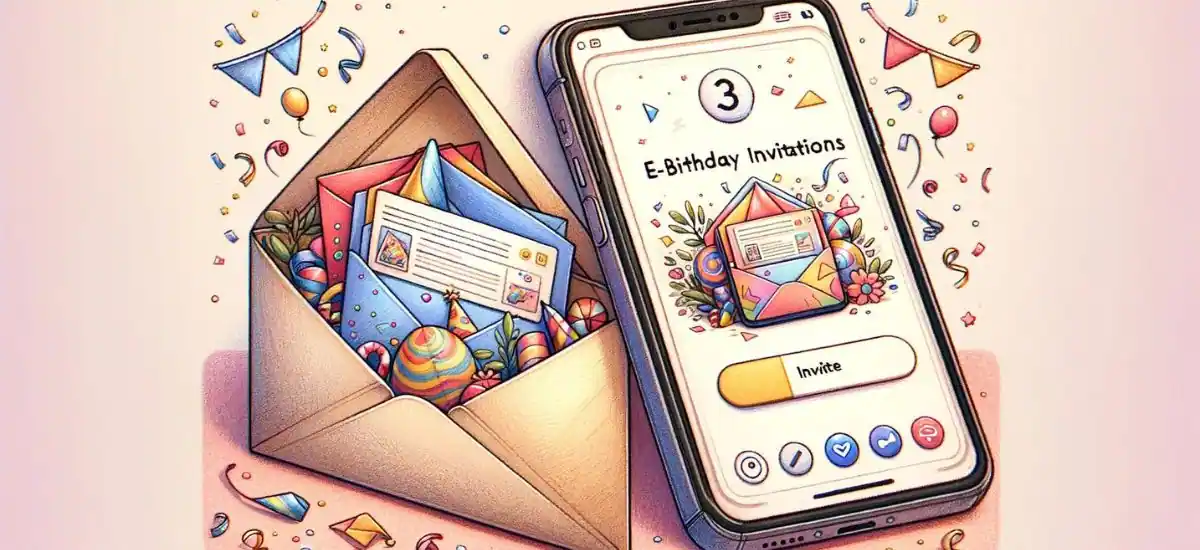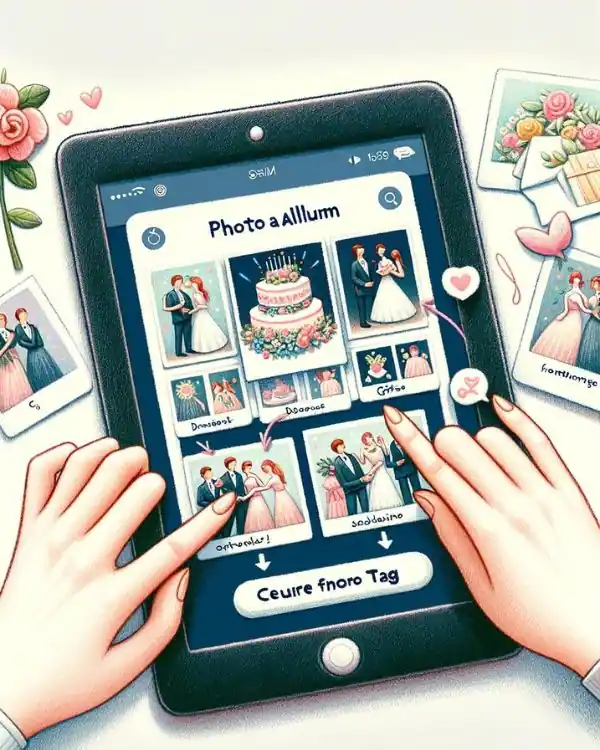Advertisement
By IS Team
How to Address and Send Birthday Invitations Properly

Advertisement
Crafting and sending birthday invitations is an art that adds a personal and thoughtful touch to your celebration, setting the tone for your special day. The key to addressing and sending invitations properly lies in choosing the right invitation type—be it digital for its efficiency and eco-friendliness or physical for its personal charm and tangibility.
Regardless of the format, ensuring your invitation reflects the event's theme and includes all vital details like date, time, location, and RSVP instructions is crucial. Addressing your guests with respect to their titles and relationship to you adds a layer of personalization, while timely sending allows them to plan accordingly.
Following up with a heartfelt thank you note captures the essence of gratitude, making each guest feel valued. In essence, the perfect birthday invitation process is about blending tradition with personal touches, ensuring each guest feels eagerly anticipated and cherished. 🎉
Selecting the Right Invitation

Creating the ideal birthday invitation is more than sharing details—it's about sparking excitement and giving a sneak peek of the celebration to come. Dive into the craft of choosing the perfect invite, making it a must-attend event for your guests.
Digital vs. Physical Invitations: Pros and Cons
| Invitation Type | Description | Pros | Cons |
|---|---|---|---|
| Digital Invitations | Electronic invites sent via email or digital invitation platforms. | - Instant delivery - Eco-friendly - Easy to manage RSVPs online - Cost-effective - Ideal for informal gatherings or when on a tight timeline | - May get lost in a crowded inbox - Less personal - Not everyone may be tech-savvy |
| Physical Invitations | Traditional paper invites are mailed out to guests. | - Tangible and personal - Can become a keepsake - Offers a touch of tradition and formality - Perfect for setting a sophisticated or themed tone | - Requires more time and money for printing and postage - Tracking RSVPs can be more cumbersome |
Design and Theme: Matching the Invitation with the Party Theme
- First Glimpse of the Event: The invitation is the initial peek into the party's vibe and theme.
- Reflect the Celebration's Essence: Whether it’s a laid-back beach party, a sophisticated soiree, or a whimsical fairy-tale gathering, ensure the invitation mirrors the spirit of your event.
- Use Theme-Aligned Elements: Incorporate colors, fonts, and imagery that match your party theme for a cohesive look.
- Create an Immersive Experience: Aim for your invitation to set the tone, inviting guests into the celebration's atmosphere right from the start.
Information to Include
An effective invitation communicates all necessary details clearly and concisely:
- Date and Time: Specify the day of the week to avoid any confusion. Mentioning the end time is also considerate, especially for events on a weekday.
- Location: Include the full address and, if necessary, directions or a map. For digital invites, links to Google Maps can be incredibly helpful.
- RSVP Instructions: Provide clear instructions on how and by when guests should respond. Include contact information or a link for online RSVPs.
- Theme or Dress Code: If your party has a specific theme or dress code (e.g., "cocktail attire," "1920s glamour," "beach casual"), make it clear on the invitation to help guests prepare.
Choosing the perfect invitation—digital or physical—is key in party planning, ensuring theme alignment and essential details to excite and respect your guests. Let the celebration anticipation build! 🎈
Addressing the Envelopes

Addressing invitation envelopes properly is an art that adds a personal touch to your event invitation process. Here’s how to do it right, with examples to guide you:
Formal Invitations
For events that call for a bit of formality, addressing your invitations should reflect the tone of the event.
- Use Full Names and Titles: Always include the recipient's title (Mr., Mrs., Dr., etc.) along with their full name. For example, "Dr. Jane Smith" or "Mr. and Mrs. John Doe."
- Writing Out Addresses: The address should be fully written out. For instance, "1234 Windsor Lane" instead of "1234 Windsor Ln."
Example: Envelope: "Dr. and Mrs. Alexander Hamilton" Address: "2024 Independence Avenue, Springfield, Illinois"
Casual Invitations
When the occasion is more laid-back, the way you address your invitations can be too.
- Personalized Addressing: Feel free to use first names or nicknames based on your relationship with the guest. For example, "Jake and Sarah" instead of "Mr. and Mrs. Jacob Anderson."
- Flexibility in Format: You have more leeway with the address format, but ensure it’s still clear and complete.
- Example: Envelope: "Alex and Sam"
Address: "45 Beachside Haven, Malibu, CA"
Children's Invitations
For parties aimed at younger guests, consider the age and direct the invitation accordingly.
Addressing to Parents or Guardians: If the child is under a certain age, it’s appropriate to address the invitation to their parent or guardian. For example, "To the parents of Ella Brown" or simply "Ella Brown c/o Mr. and Mrs. Brown."
Envelope: "Jamie Wilson c/o Mr. and Mrs. Wilson"
Address: "7890 Maple Street, Newtown, PA"
Tips for Legible Font
Whether you’re printing addresses or writing them by hand, legibility is key.
- Choosing the Right Font: For printed invitations, select a font that’s both readable and matches the style of your event. A font like Times New Roman is classic for formal events, while a font like Comic Sans might suit a child’s birthday party (though widely discouraged for its informal appearance in professional settings).
- Practicing Neat Typography: If handwriting envelopes, take the time to practice your penmanship. For a uniform look, consider using a template or a light pencil guideline that you can erase later.
Etiquette for Addressing Invitations

Properly addressing invitations is crucial for conveying respect and ensuring clarity. Here's how to navigate the nuances of invitation etiquette across different guest scenarios.
Single Guests
- With a Guest Option: If you're allowing single guests to bring a date, the envelope should read "Mr./Ms. [Guest's Name] and Guest." For example, "Ms. Jane Doe and Guest."
- Without a Guest Option: Address the invitation solely to the individual. For example, "Mr. John Smith."
Couples
- Married Couples: Use "Mr. and Mrs. [Husband's First Name] [Last Name]" for traditional invitations. For a modern approach, use both full names: "Mr. John Doe and Mrs. Jane Doe."
- Engaged Couples: Address them similarly to married couples but using both full names. For example, "Mr. John Smith and Ms. Emily Johnson."
- Unmarried Couples Living Together: Use both full names on one line if space allows. Otherwise, separate lines without repeating the last name. For example, "Mr. John Smith and Ms. Emily Johnson."
Families
- With Children: Address the envelope to the parents, followed by "and Family." For example, "Mr. and Mrs. Jones and Family." If only inviting children, include the children's names on a second line.
- Children Over 18: Should receive their own invitation.
Special Titles
- Professional or Honorary Titles: Use the appropriate title for guests with special titles. For a married couple where one person has a title, address them as "Dr. Maria Green and Mr. John Green." For both with titles, "Dr. Anne Baker and Prof. James Baker."
Tips:
- For gender-neutral titles or when in doubt, use full names without titles or "Mx." as a gender-neutral honorific.
- Hyphenated Last Names: Use the full hyphenated name. For couples with different last names, list the person you're closest with first.
Properly addressing your invitations shows thoughtfulness and respect for your guests, setting a positive tone for your event. Always consider the preferred titles and names of your guests, reflecting inclusivity and attention to detail.
Assembling the Invitation

Order of Enclosures
Place the invitation first, followed by the RSVP card (in its envelope), and then any additional info cards on top. Ensure all texts face upwards for easy reading.
Sealing the Envelopes
- Decorative Seals: Use for elegance or thematic consistency. Wax seals are a popular, formal choice.
- Traditional Methods: The envelope's adhesive flap suffices for most invites, with clear stickers or tape as secure, clean options.
Short and sweet, assembling your invitations correctly is crucial for setting the right tone for your event.
Sending the Invitations

Timing
- Optimal Time Frames: Send out invitations 4-6 weeks in advance for casual or local events. For more formal or destination events, 2-3 months ahead is advisable to allow guests to arrange travel and accommodations.
Tracking RSVPs
- Methods: Utilize digital platforms or a spreadsheet to keep track of who has responded. For physical RSVP cards, designate a space in your home for collecting and organizing responses as they arrive.
Handling Late RSVPs and Reminders
- Polite Reminders: If responses lag, sending a gentle reminder via email or text about a week after the RSVP deadline can nudge guests to reply. Phrase it kindly, expressing your eagerness to have them join the celebration.
Digital Invitation Considerations

When embracing the convenience of digital invitations for your next event, several key factors ensure your invites are both impactful and respectful to your guests.
Choosing a Platform
- Popular Platform: For those looking to create and send digital invitations, InvitationStreet.com stands out. It offers a variety of templates and tools that cater to different themes and preferences, making it easy to design a personalized and professional-looking invitation.
Digital Etiquette
- Timing: Send digital invitations 3-4 weeks before the event for casual gatherings and at least 2 months in advance for formal or destination events.
- Addressing Guests: Even in digital form, address guests formally or casually based on the event's tone. Use their proper titles and names, ensuring the invitation feels personal.
Privacy and Security
- Protecting Information: When using digital invitation platforms, confirm their privacy policy to ensure your and your guests' information is securely handled and protected. Avoid sharing sensitive information in the invitation itself and opt for secure RSVP options.
Following Up

The event's conclusion marks the beginning of a new opportunity to leave a lasting impression on your guests through thoughtful follow-up gestures.
Thank You Notes
- Importance: Sending out thank you notes promptly (within two weeks) post-event shows appreciation for your guests' attendance and gifts.
- Personalization: Make each note personal, reflecting on specific interactions or gifts, to convey genuine gratitude and strengthen relationships.
Post-Event Communication
- Sharing Photos and Memories: Use digital platforms to share photos and memories, creating a shared online album or using a special event hashtag for social media posts.
- Feedback: Soliciting feedback, though not mandatory, can offer valuable insights for future events and keep the engagement going.
Special Circumstances

Additionally, the diversity of your guest list may require cultural sensitivity in your invitations. Here's how to navigate these situations gracefully.
Cancelations or Changes to the Event
Effective Communication: If you need to cancel or change event details, communicate this as soon as possible. Use the same channels you used for the invitations (e.g., digital platforms, email, or mailed notices) for consistency.
Politeness and Transparency: Be clear and polite in your message, explaining the reason for the change or cancellation in a concise manner. Offer alternatives if applicable, such as a new date or a virtual gathering option.
Cultural Considerations
Research and Respect: When your guest list includes individuals from diverse cultural backgrounds, take the time to research and respect their customs and traditions. This could influence invitation design, language, and even the event's date and timing to avoid cultural or religious conflicts.
Inclusivity in Invitations: Strive for inclusivity in your wording and design choices. For example, consider using non-denominational greetings or symbols and offering menu options that cater to various dietary restrictions.
Sending birthday invitations is an opportunity to express creativity, thoughtfulness, and respect for your guests. It's not just about the details but about weaving a narrative that your loved ones are a vital part of your celebration. So, take a deep breath, wield your pen (or keyboard) with confidence, and let the magic of inviting begin! 💌✨
Frequently Asked Questions
Q1. How do I address an invitation to a child when their parents are divorced?
Address the invitation to the child by including both parents' names on separate lines if they reside at different addresses, or to the parent the child primarily lives with, adding "and family" to include the child.
Q2. Is it appropriate to request no gifts on the birthday invitation?
Yes, it's perfectly acceptable. Phrase it politely, such as "Your presence is the only gift we wish for," to convey your message gracefully.
Q3. How soon should I follow up with guests who haven't responded by the RSVP deadline?
Wait a week past the RSVP deadline before following up. A friendly and polite reminder, either through a call or message, is effective in securing their response.
Advertisement
I'm Looking For!




.png)
.png)
.png)

